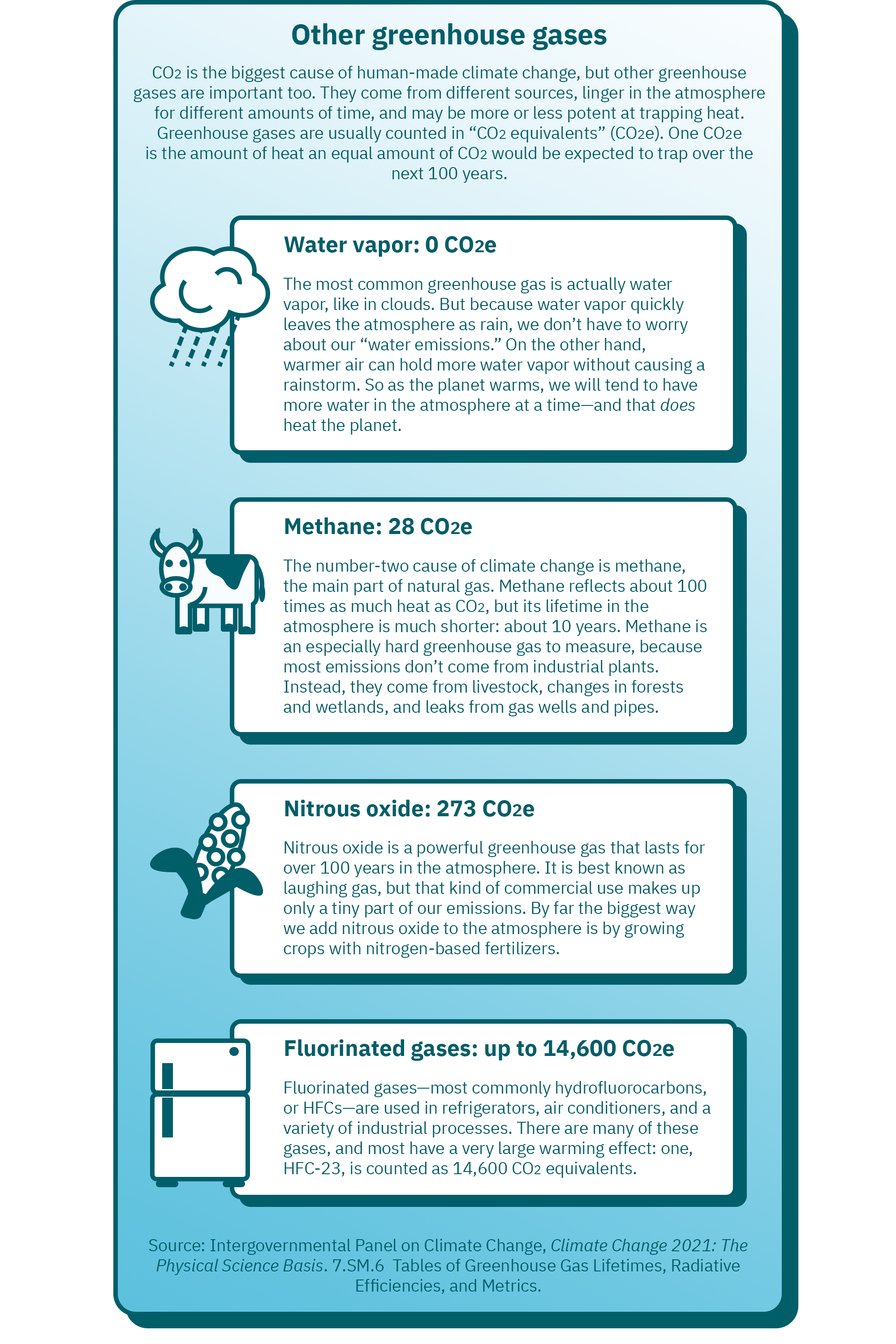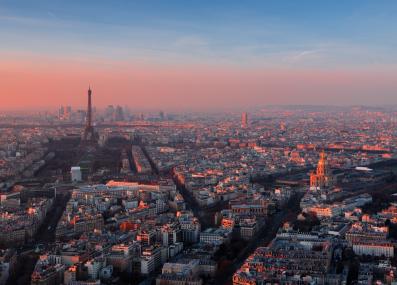New to Climate Change?
Greenhouse Gases
Greenhouse gases are gases—like carbon dioxide (CO2), methane, and nitrous oxide—that keep the Earth warmer than it would be without them. The reason they warm the Earth has to do with the way energy enters and leaves our atmosphere. When energy from the sun first reaches us, it does so mainly as light. But when that same energy leaves the Earth, it does so as infrared radiation, which we experience as heat. Greenhouse gases reflect infrared radiation, so some of the heat leaving the Earth bounces off the greenhouse gases in our atmosphere and comes back to the Earth’s surface. This is called the “greenhouse effect,” in a comparison to the heat-trapping glass on a greenhouse.
The greenhouse effect is not a bad thing. Without it, our planet would be too cold for life as we know it. But if the amount of greenhouse gases in the atmosphere changes, the strength of the greenhouse effect changes too. This is the cause of human-made climate change: by adding greenhouse gases to the atmosphere, we are trapping more heat, and the entire planet gets warmer.
The focus on “carbon”
For climate change, the most important greenhouse gas is carbon dioxide, which is why you hear so many references to “carbon” when people talk about climate change. There are three main reasons CO2 is so central to the global warming happening today. First, there is just so much of it. We now add around 40 billion tons of CO2 to the atmosphere every year, mostly by burning carbon-rich fuel like coal and oil that had previously been trapped in the ground. Second, it lasts a long time in the atmosphere. The CO2 we emit today will stay above us reflecting heat for hundreds of years. This means that, even if we stop all new CO2 emissions tomorrow, it will take many lifetimes before the warming effect of our past emissions fades away.
Finally, many different industries rely on carbon-rich fuels or other processes that give off CO2. That includes burning fossil fuels for electricity and heat and to power our vehicles, but it also includes manufacturing concrete and steel, the refining process for raw oil and gas, fermentation (for instance, to make alcohol or pharmaceuticals), and the decay of plant matter (like after trees are cut down). All of these sectors can make changes to emit less CO2, but the same solutions won’t work for all of them.

Click here to see data from the infographic above in a table.
| Greenhouse gas | CO2 equivalents | Description |
|---|---|---|
| Water vapor | 0 | The most common greenhouse gas is actually water vapor, like in clouds. But because water vapor quickly leaves the atmosphere as rain, we don’t have to worry about our “water emissions.” On the other hand, warmer air can hold more water vapor without causing a rainstorm. So as the planet warms, we will tend to have more water in the atmosphere at a time—and that does heat the planet. |
| Methane | 28 | The number-two cause of climate change is methane, the main part of natural gas. Methane reflects about 100 times as much heat as CO2, but its lifetime in the atmosphere is much shorter: about 10 years. Methane is an especially hard greenhouse gas to measure, because most emissions don’t come from industrial plants. Instead, they come from livestock, changes in forests and wetlands, and leaks from gas wells and pipes. |
| Nitrous oxide | 273 | Nitrous oxide is a powerful greenhouse gas that lasts for over 100 years in the atmosphere. It is best known as laughing gas, but that kind of commercial use makes up only a tiny part of our emissions. By far the biggest way we add nitrous oxide to the atmosphere is by growing crops with nitrogen-based fertilizers. |
| Fluorinated gases | Up to 14,600 | Fluorinated gases—most commonly hydrofluorocarbons, or HFCs—are used in refrigerators, air conditioners, and a variety of industrial processes. There are many of these gases, and most have a very large warming effect: one, HFC-23, is counted as 14,600 CO2 equivalents. |
Updated July 25, 2025. This Explainer was adapted from “Explained: Greenhouse Gases” by David Chandler, which originally appeared in MIT News.







